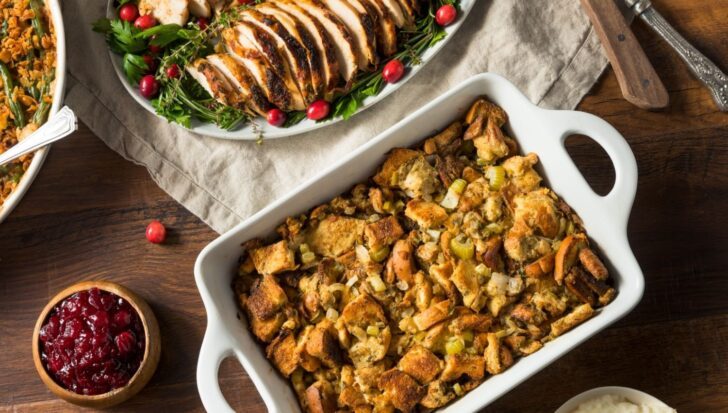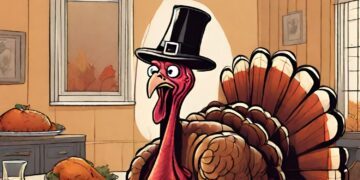Every year, on the fourth Thursday in November, friends and family gather across the US to celebrate Thanksgiving. It’s also celebrated in Canada, Liberia, and Saint Lucia.
This holiday is a time to come together and be grateful for the many blessings we’ve received. But if we’re being honest, the food steals most of the attention.
Roast turkey might be the centerpiece of Thanksgiving dinner, but who can resist the amazing side dishes, especially the stuffing?
Here’s something you might not know: you shouldn’t be putting the stuffing inside the turkey. Surprised? Keep reading to find out why.
What is stuffing, and where did it originate?
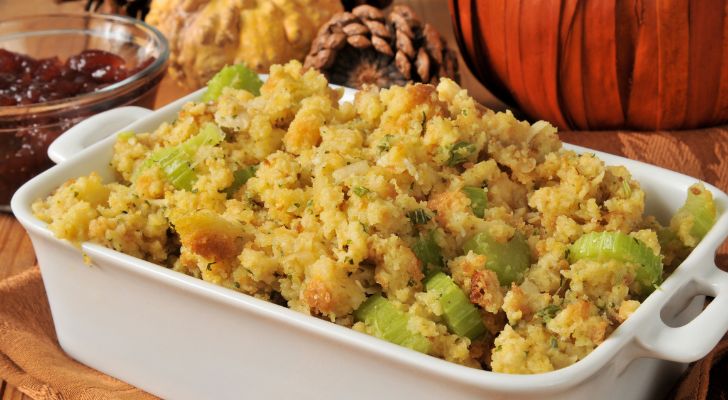
Stuffing is a mixture of various ingredients, including vegetables, herbs, and some form of starch, like bread. A binder, usually eggs, holds all these ingredients together.
It’s traditionally made to be put inside things like poultry, vegetables, or baked goods but may also be cooked separately.
Humans have been making stuffing long before Thanksgiving existed, though we can’t say for sure how long that is.
The oldest record where stuffing is even mentioned is an ancient Roman cookbook, Apicius de re Coquinaria, which was published around the first Century AD.
It contained instructions on how to stuff chicken, rabbit, pig, and even a dormouse with grains, spices, vegetables, and meat.
As for Thanksgiving stuffing, it may look different depending on what part of the country you’re in. For instance, Southern-style turkey stuffing is incomplete without cornbread.
On the other hand, other parts of the US don’t bother too much about the type of bread you use.
Of course, there are many other mouth-watering stuffed dishes from around the world that aren’t at all like North American-style Thanksgiving stuffing.
Some examples are the Turkish Yaprak Sarma (mince rolled in vine leaves), Balkan Punjena Paprika (stuffed green peppers), North African Mafroum (stuffed vegetables in red sauce), and Bharva Mirch (stuffed green chili) from India.
Why is it bad to put stuffing in your Thanksgiving turkey?
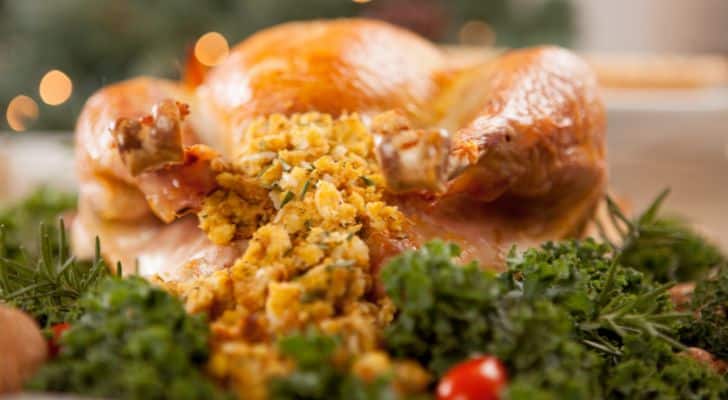
As much as we love Thanksgiving stuffing, health experts warn that we shouldn’t actually put the stuffing inside the turkey.
Before you reject the idea, there’s a good reason why, and it all boils down to food safety.
Sometimes, raw turkey can contain potentially harmful germs like salmonella. To be safe, you should cook it thoroughly to at least 165 degrees Fahrenheit (73.9 degrees Celsius).
But getting it to this safe internal temperature might be difficult if there’s stuffing inside.
Contaminated animal juices containing these germs may seep into the stuffing, where they might survive the cooking process. Poorly cooked poultry and stuffing could make you sick.
What is the purpose of stuffing?
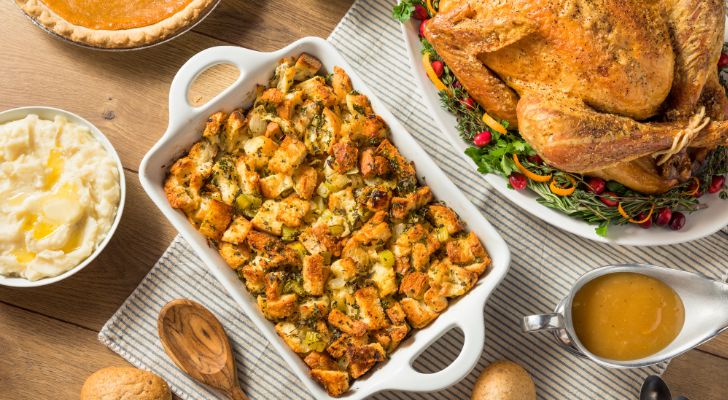
One of the biggest reasons for using stuffing is that it improves the flavor of the food. Stuffing involves a flavor exchange.
For example, in stuffed poultry, the meat juices seep into the stuffing, while the herbs, veggies, and spices infuse the meat with a richer flavor.
Stuffing meat also helps prevent it from drying out. It acts like a barrier that stops moisture from evaporating too quickly, which can be a real help when you’re cooking something large like the Thanksgiving turkey.
Lastly, our use of stuffing is deeply rooted in tradition. Can you imagine celebrations like Thanksgiving and Christmas without stuffing? The horror!
How can you safely cook Thanksgiving stuffing?
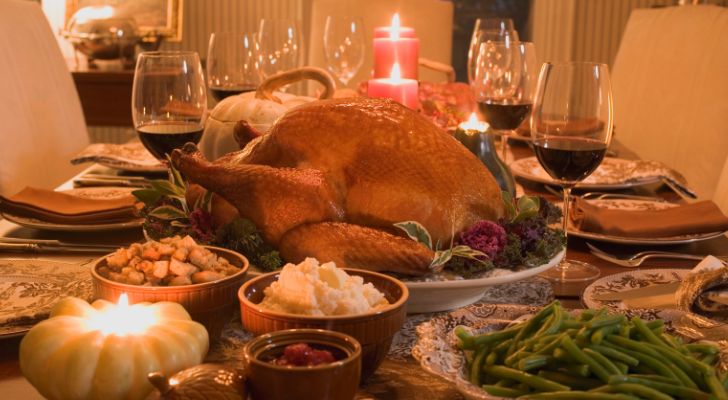
Health experts are clear: The best way to cook your Thanksgiving stuffing is to prepare it separately.
This way, you can avoid cross-contamination and be sure that both dishes are thoroughly cooked.
However, if you insist on stuffing your turkey at home, the United States Department of Agriculture has shared some tips to minimize contamination.
Start by cooking any meat, shellfish, or poultry that will be going into the stuffing. Then, prepare your stuffing as usual and store it in your refrigerator if you’re not ready to use it immediately.
While stuffing your turkey, don’t overfill its cavity. Instead, you want to leave room for heat to circulate better.
Remember the magic number 165 °F (73.9 °C). That’s how hot you want the turkey’s internal temperature to be. You can confirm that the turkey and stuffing have reached this safe temperature using a meat thermometer.
Once your Thanksgiving turkey is cooked, let it rest a bit before carving. If you want to be extra careful, you can take out the stuffing and allow it to sit in the oven a bit longer.
Who doesn’t love a good Thanksgiving turkey with stuffing? The food is a crucial part of the celebration as we gather to reflect on the things we’re grateful for.
Unfortunately, stuffing the whole turkey might make it harder to ensure that it’s thoroughly cooked. Consequently, a poorly prepared Thanksgiving dinner can make you or your family ill.
To reduce the risk of food poisoning during this special holiday, you’re advised to cook the stuffing separately.

